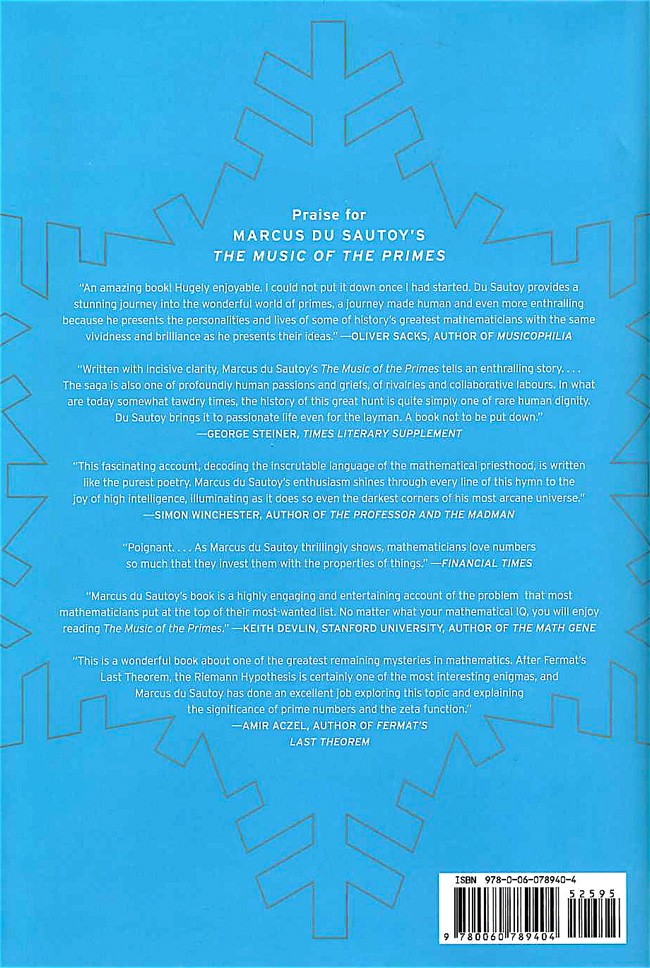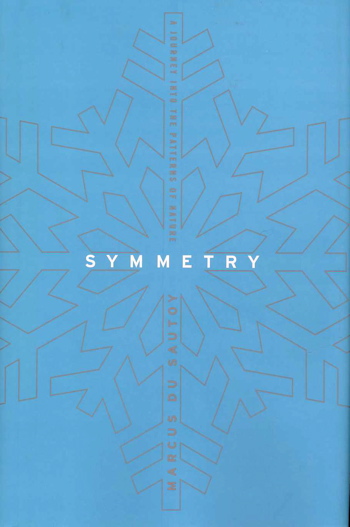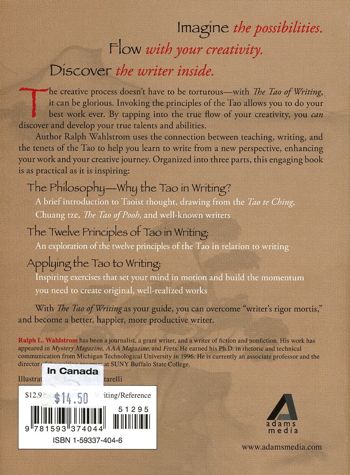Sunday May 18, 2008 6:00 am Edmonton, Alberta
This page last updated on:
Tuesday, May 20, 2008 4:18 PM
It is +16 C with a high forecast of +25 C. Sunrise 5:28 Sunset 21:33 Hours of daylight: 16:05
A. Morning Musings
I will begin the morning with a cup of coffee, then make a few final notes for the book "Symmetry" by Marcus du Sautoy.
I expect to do some painting later this morning as one wall needs to be redone after the workers replaced some windows in the west wall a couple of weeks ago. This should only take about an hour.
I also expect to finish reading "Late Nights on Air" today. This is a wonderfully crafted simple story which I am thoroughly enjoying.
| Learning Category |
Planned Activities for Today |
Time |
| Literature |
Begin morning with a Rumi reading |
|
| Literature |
Complete reading "Late Nights on Air" by Elizabeth Hay |
1 hr |
| Literature |
Begin reading "The Tao of Writing" by Ralph Wahlstrom |
2 hr |
| Mathematics |
Make notes on "Symmetry" |
2 hr |
| Puzzles & Games |
New York Times crossword puzzles |
1 hr |
B. Actual Learning Activities
6:30 am
Notes on Symmetry - 12
Dale Burnett
| I completed reading "Symmetry" by Marcus du Sautoy yesterday afternoon. I now want to review the last 5 chapters and make a few final notes. |
Date |
Mathematics |
History |
500 BCE |
Pythagorus |
|
399 BCE |
Thaetetus classifies the 5 regular Platonic solids in 3 dimensions: tetrahedron, cube, octahedron, dodecahedron, icosahedron. |
|
1048 - 1131 |
Omar Khayyam finds geometric method for solving cubic equations. |
|
1200 |
Leonardo Fibonacci wtote the first original book on mathematics published in Europe. It introduced Hindu-Arabic numerals and place-value notation. |
|
1439 |
|
Gutenberg invents the printing press |
1452 - 1519 |
|
Leonardo da Vinci |
1492 |
|
Columbus discovers America |
early 1500s |
del Ferro, Tartaglia, Cardano, Ferrari solve cubic & quartic equations |
|
1564 - 1642 |
Galileo |
|
1642 - 1727 |
Isaac Newton |
|
1775 - 1783 |
|
American War of Independence |
1777 - 1855 |
Carl Friedrich Gauss |
|
1789 - 1799 |
|
French Revolution |
1802 - 1829 |
Niels Henrik Abel proves that no formula exists for equations of degree 5. |
|
1832 |
Evariste Galois dies at age 20. |
|
1842 - 1899 |
Sophus Lie: Norwegian group theorist |
|
|
|
|
I completed reading "Symmetry" yesterday afternoon. Now to make a few notes on the last 5 chapters. It has been almost a month since I last looked at this book.
Here is my chart of symmetry readings: Each cell will corresponds to a chapter. Yellow indicates the number of chapters in the book, green indicates that I have read and made notes on the chapter. Grey indicates that I used part of the chapter. The background colors of the book titles are purple for mathematics books where one actually does the mathematics and light blue indicated books that describe what others have done. In an ideal world on each day I should be able to add at least one cell to what I have read.
| |
1 |
2 |
3 |
4 |
5 |
6 |
7 |
8 |
9 |
10 |
11 |
12 |
13 |
14 |
15 |
16 |
17 |
18 |
19 |
20 |
21 |
22 |
23 |
|
|
|
|
|
|
|
|
|
|
|
|
|
|
| Symmetry |
|
|
|
|
|
|
|
|
|
|
|
|
|
|
|
|
|
|
|
|
|
|
|
|
|
|
|
|
|
|
|
|
|
|
|
|
|
| Fearless Symmetry |
|
|
|
|
|
|
|
|
|
|
|
|
|
|
|
|
|
|
|
|
|
|
|
|
|
|
|
|
|
|
|
|
|
|
|
|
|
| Algebra |
|
|
|
|
|
|
|
|
|
|
|
|
|
|
|
|
|
|
|
|
|
|
|
|
|
|
|
|
|
|
|
|
|
|
|
|
|
| Abstract Algebra |
|
|
|
|
|
|
|
|
|
|
|
|
|
|
|
|
|
|
|
|
|
|
|
|
|
|
|
|
|
|
|
|
|
|
|
|
|
| Creating Escher-type Drawings |
|
|
|
|
|
|
|
|
|
|
|
|
|
|
|
|
|
|
|
|
|
|
|
|
|
|
|
|
|
|
|
|
|
|
|
|
|
| Handbook of Regular Patterns |
|
|
|
|
|
|
|
|
|
|
|
|
|
|
|
|
|
|
|
|
|
|
|
|
|
|
|
|
|
|
|
|
|
|
|
|
|
| Symmetry & the Monster |
|
|
|
|
|
|
|
|
|
|
|
|
|
|
|
|
|
|
|
|
|
|
|
|
|
|
|
|
|
|
|
|
|
|
|
|
|
| The Celtic Design Book |
|
|
|
|
|
|
|
|
|
|
|
|
|
|
|
|
|
|
|
|
|
|
|
|
|
|
|
|
|
|
|
|
|
|
|
|
|
| Groups & Symmetry |
|
|
|
|
|
|
|
|
|
|
|
|
|
|
|
|
|
|
|
|
|
|
|
|
|
|
|
|
|
|
|
|
|
|
|
|
|
| Groups: A Path to Geometry |
|
|
|
|
|
|
|
|
|
|
|
|
|
|
|
|
|
|
|
|
|
|
|
|
|
|
|
|
|
|
|
|
|
|
|
|
|
| A Transition to Advanced Mathematics |
|
|
|
|
|
|
|
|
|
|
|
|
|
|
|
|
|
|
|
|
|
|
|
|
|
|
|
|
|
|
|
|
|
|
|
|
|
| Modern Abstract Algebra |
|
|
|
|
|
|
|
|
|
|
|
|
|
|
|
|
|
|
|
|
|
|
|
|
|
|
|
|
|
|
|
|
|
|
|
|
|
|
M. du Sautoy. (2008). Symmetry.
Chapter 8 March:
- "There are three stages to understanding something. The first is when you suddenly get it. The second is standing in front of a seminar audience and trying to convey to others the vision you've had. The equations on the blackboard combine with the physical presence of the speaker to conjure up ideas in the listener. But the third and hardest stage of understanding something is translating it into the printed page. There, the maths is going to be read without you present as a guide. Everything must be well signposted so that the reader doesn't get lost." [p. 208]
That is also relevant to this web site. Although I am ostensibly writing this for myself, I am aware that a few other people are reading this and I want this to be meaningful to them as well. |
- "A French mathematician, Joseph Liouville, ... even has a number names after him: 0.110 001 000 000 000 000 000 001 000 ... ... where a 1 occurs at each decimal place which is one of the factorial numbers n!. Liouville used this number to show that there are some numbers which aren't solutions to equations: so-called trancendental numbers." [p. 210]
This is an aside to the theme of the book but it highlights for me that I do not have a clear grasp of the concept of a transcendental number. I do have a good sense of the natural numbers, the rationals, the irrationals and the complex. I am familiar with the term transcendental but do not have a good sense of the nature of such numbers.
Googling "transcendental number" gives the following web sites:
|
- "What comes out of the subsequent development of Galois's work is a new way to think about symmetry. For most people, symmetry is a static property of an object. Galois's work inspired a different perspective. Symmetry should be thought of as something active rather than passive. A symmetry of an object is what you can do to an object to leave it essentially looking like it did before you touched it." [p. 212]
- "At the heart of Galois's vision is the recognition that one shouldn't just look at individual symmtries of an object or a system. Rather, one must understand the symmetries in totality as a collection, or what he called a group. ... Galois was interested in the collection of all symmtries and seing what happens if you 'do' one symmetry after another. He discovered that it is the interactions between the symmetries in a group that encapsulate the essential qualities of the symmetry of an object." [p. 212]
- "Galois's amazing discovery, which he made when he was analyzing the interactions of the symmetries within entire groups, was that some groups of symmetries could be broken down into smaller groups of symmetries. Other groups, however, seemed to be immune to such subdivision." [p. 213]
| This is the key point of Galois's contribution to mathematics. |
- "Galois ... realized that the indivisibility of the group of symmetries of an equation held the key to whether the underlying equation could be solved or not. If a group of symmetries could be broken down into rotational symmetries of prime-sided shapes, the equation could be solved. Otherwise, it couldn't be solved." [p. 214]
I still do not really understand the logic of this statement.
One of my goals is to understand enough group theory to genuinely understand why this statement is true. |
- "Felix Klein believed that 'The presentation of mathematics in school should be psychological and not systematic. The teacher, so to speak, should be a diplomat. He must take account of the psychic processes in the boy in order to grip his interest, and he will succeed only if he presents things in a form untuitively comprehensible.' " [p. 226]
We understand so very little about what a learner at any age is really understanding. Yet without such an understanding it will be difficult to determine what should be said or done next to facilitate a greater understanding of the topic.
Since this seems to be so difficult, perhaps we should shift our emphasis to that of supporting self-initiated and self-motivated activities so the individual learner can better direct their own learning. |
- "Mathematicians were beginning to understand that there were many different ways of representing the same group of symmetries. ... Whether it is shuffling four cards, spinning a tetrahedron or permuting four lines in finite geometries, there is a common abstract entity, called the alternating group of degree 4, which captures the essential symmetry behind each example." [p. 232]
- Arthur Cayley (English) saw that one could express the result of applying one symmetry after another by means of a "multiplication" table. Two different scenarios that gave the same table were then said to have the same symmetry.
For me, this is the most important chapter in the entire book.
The remainder of the book is primarily about the quest to identify all of the possible different symmetries. |
Chapter 9 April: Sounding Symmetry
- "For me, one of the most interesting abstract expressions of symmetry is in music." [p. 243]
- "Breaking symmetry in art has a long heritage. The carpet weavers of Persia and Arabia would deliberatley weave a fault into a small portion of their otherwise beautifully symmetric carpets to destroy the perfect balance." [p. 249]
The fabric book cover for this book incorporates the same principle! |
- "Although ambiguity might be something that mathemticians will do their utmost to avoid when writing up their work, they are often as coy as artists when it comes to revealing their inspirations. I appreciate that this is important in the arts, but I believe that it can be quite dishonest in mathematics." [p. 262]
| Maybe. But maybe it should also apply to the arts. |
Chapter 10 May: Exploitation
- This chapter contains a description of how symmetry is relevant to the study of viruses as well as to the creation of unbreakable codes.
Chapter 11 June: Sporadic
- "The following year, the university decided to host a year-long workshop on group theory ..." [p. 300]
Chapter 12 July: Reflections
| I like the title of this chapter. |
I remain committed to learning more of the real details of group theory and how it applies to symmetry.
du Dautoy mentions on page 263 a book that "explains the mathematical language of symmetry: A Group Theory Primer" but fails to give a specific reference. I will try to email him when I return home and post this web page on the server. |
Tags: mathematics, symmetry
10:30 am
Late Nights on Air
Elizabeth Hay
This is a great Canadian novel. Not an epic story, but a very personal and a very realistic novel.
Hay writes perfectly for the story she tells. The prose fits the characters and the characters are superbly crafted. One feels that one knows them as one knows a close friend.
More surprising is the degree to which one feels that one also knows Judge Berger, even though he is never actually in the novel.
The canoe trip brought back many personal memories of our shorter (only a week long instead of 6 weeks) trips into northern Ontario in May after the semester at Queen's University was over.
I would rate this as a full 5 out of 5.
Tags: novel, Canada
12:30 PM
A very good beginning to the day. Some math, the ending of a great novel, and the painting of an interior wall that had been damaged by contractors installing new windows.
I have selected my next book: "The Tao of Writing" by Ralph Wahlstrom. After a lyrical journey through Canada's arctic, I am primed for a Taoist book.
Books on the Go Today |
|
|
|
see below |
|
|







